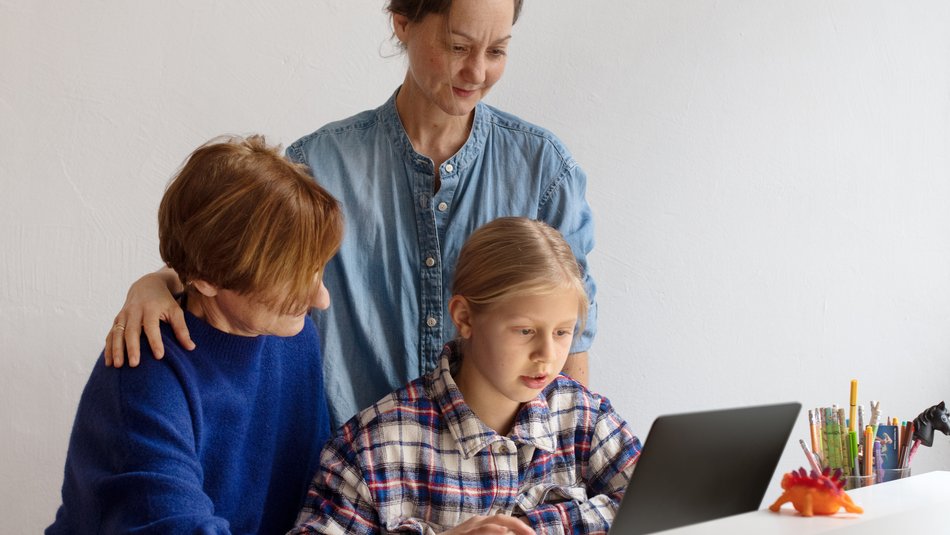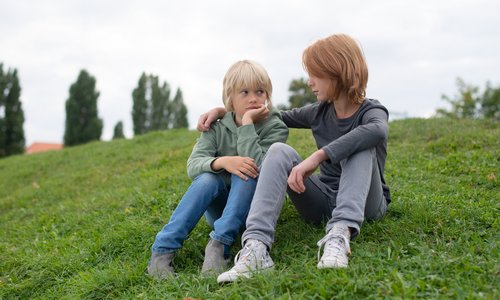
The internet is now part of everyday life for children and adolescents, as it is for everyone else. Digital media offers them many options: whilst online they can communicate with their peers, play games, watch videos or gather information. However, social networks and chat rooms in particular also harbour risks of minors being targeted for sexual violence.
Cyber-grooming
Cyber-grooming is the targeted addressing of minors via the internet with the aim of initiating sexual contacts. Cyber-grooming is a criminal offence under the Criminal Code. This punishes anyone who implements preparatory acts for potentially abusing a child or actually prepares abuse images.
Cyber-grooming mainly occurs wherever children and adolescents are active online and above all interactive with others, i.e. via online platforms such as YouTube or TikTok, in social networks such as Instagram, in group chats using WhatsApp, in online games or when using gaming platforms such as Steam.
Perpetrators want to establish a false relationship of trust.
Perpetrators often try to switch to more private communication channels such as video chat services and messengers after their initial attempt at making contact. By using the profile information posted by children and adolescents, they can obtain private information which they then use to establish contact in order to suggest closeness and common interests. They try to establish a relationship of trust and dependency with children and adolescents online, either anonymously or by using a false identity in order to manipulate them and persuade them to engage in sexual acts online or in the analogue world.
Abusive sexting
Sexting describes the voluntary sending and receiving of self-produced, revealing or erotic images from a computer or a smartphone, e.g. between relationship or sexual partners. The word is a combination of "sex" and "texting", the English term for writing and sending text messages. Adolescents often talk about sending "nudes" or "sexy pics" instead of "sexting". Children and adolescents use these images to look at themselves and experiment with how sexy they look to others.
When sexting becomes abuse
Forwarding sexting images without the consent of the sender is a form of sexualised violence. The exposure associated with unauthorised distribution to third parties at school or among acquaintances deeply embarrasses those involved. This is often when long-lasting bullying starts and it causes a lot of suffering. Once they have been posted on the internet, the images can be accessed and copied from anywhere in the world - a consequence that many children and adolescents are not sufficiently aware of.
More information about sexting
Sextortion
Sextortion is the name given to a special form of abusive sexting. Sextortion, which is made up of the words "sex" and "extortion” (blackmail), is a phenomenon in which the people involved are urged into creating explicit images, nude images or videos in order to blackmail them. The perpetrators then threaten to publish or distribute the images and demand money or more material. When children and adolescents are involved, more and more explicit images are often demanded so that they can be used and distributed as images of abuse.
Abuse images
There has been a massive increase in offences involving abuse images in recent years. Today, servers located in the EU now host the highest number of abuse images in the internet in the world. Reports of online abuse have increased from 23,000 cases in 2010 to more than 725,000 in 2019. These figures only involve those that have been exposed; as most of the offences remain unknown. They therefore do not appear in any crime statistics and cannot be prosecuted.
Children who have been sexually abused and then found out that it was recorded during the violation have to endure a special burden. In addition to the painful and life-damaging consequences of sexual violence, they also have to live with the knowledge that the abuse images still exist and they can be distributed. The powerlessness experienced during the abuse is prolonged through knowing that the abuse images are being distributed. This makes processing sexual abuse considerably more difficult.
More information about abuse images
Offers of help for sexual violence on the internet
In addition to the information given on this website, UBSKM also has a number of services that provide access to help and support for dealing with sexual violence in cyberspace.
Help and counselling in cases of sexual violence when using digital media
The Sexual Abuse Help Portal and the Sexual Abuse Telephone Helpline both provide confidential, anonymous and competent online sexual violence counselling either online or by phone.
Information about prevention concepts
The "No room for abuse" initiative shows how concepts for preventing sexual violence are taking digital risks into consideration.
UBSKM has compiled information about prevention concepts and help in cases of online sexual violence for internet and IT providers.




